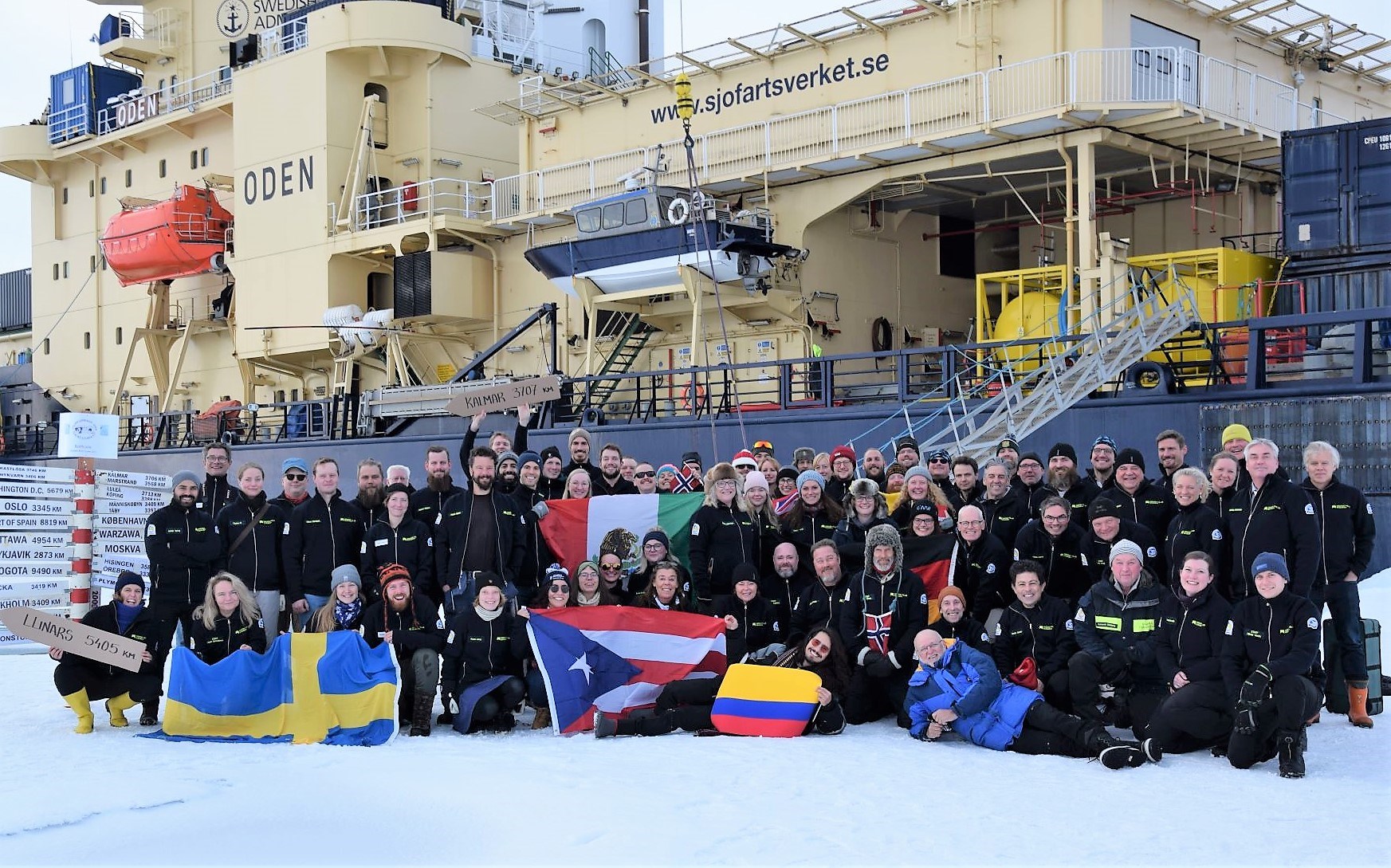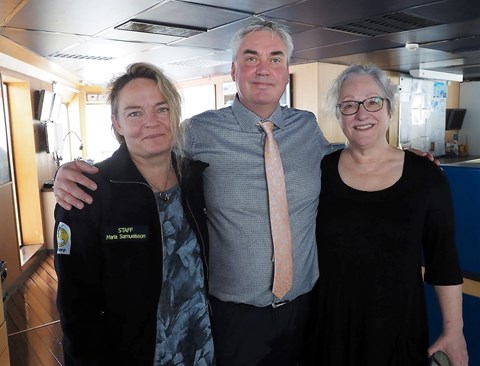Press release: 30th anniversary of the icebreaker Oden at the North Pole
 Participants in Synoptic Arctic Survey 2021 at the North Pole. Photo: Hans-Jørgen Hansen
Participants in Synoptic Arctic Survey 2021 at the North Pole. Photo: Hans-Jørgen Hansen
Yesterday, 16 August at 20:46 UTC, the Swedish icebreaker Oden arrived at the North Pole for the tenth time. The first visit was made in 1991 when Oden was the first non-nuclear-powered ship to reach the North Pole together with the German research icebreaker Polarstern. Since then, Oden has been to the North Pole in 1996, 2001, 2004, 2005, 2009, 2012, 2016 and 2018.
– The ice situation has been quite tough throughout the trip. We are now navigating the ice around the North Pole, and it is about 2.5 meters thick. We celebrated the North Pole visit by inviting everyone to the bridge to see when the GPS receiver switched from N89°59.9 to then start counting down again on the other side of the globe. After we passed the North Pole, everyone went out on the ice. Oden's kitchen staff offered grilled sausages and hot chocolate, says Mattias Petersson, captain of the icebreaker Oden.
The visit to the North Pole takes place within the research expedition Synoptic Arctic Survey, which started on 25 July. During the expedition, the researchers investigate the marine ecosystem between Greenland and the North Pole with an ambitious sampling program for hydrographic, chemical, and biological parameters.
The area has previously been unexplored due to the difficult ice conditions, but with the help of Oden, the researchers can for the first time collect data here. This will be important for understanding how the ecosystem in the central Arctic works and is affected by a warmer climate.
If the ice conditions and the weather allow, Oden will regularly anchor in the ice in connection with the installation of nine 24-hour ice stations. One of these is set up at the North Pole. The purpose of the stations is to inventory the fish stock in the central Arctic, among other things, with the help of a specially designed net that measures ten meters in diameter.
– The beginning of the expedition has gone well. The data collection has been successful, and we completed a quarter of the samples. We are yet to catch fish, but surprisingly many prawns that make up the fish's food. After the North Pole, we will go to the Lomonosov ridge and the previously unexplored area that is our goal, says Pauline Snoeijs Leijonmalm, Professor of marine ecology at Stockholm University, who is Chief Scientist for the research expedition.
The return to Helsingborg is planned for 20 September.
More about the visit to the North Pole (with pictures)
Contact
Katarina Gårdfeldt
Director-General, Swedish Polar Research Secretariat
Phone: +46 72 517 07 78, katarina.gardfeldt@polar.se


